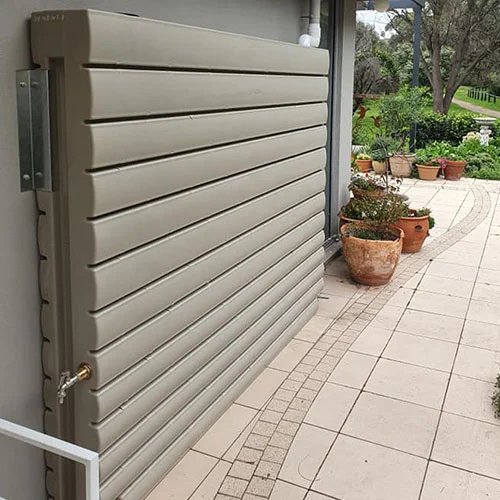Exploring the Different Uses Rainwater Tanks for Residential and Commercial Characteristics
As the international focus on lasting living methods remains to intensify, the application of rainwater containers in both household and industrial setups has actually become a pertinent option. These containers offer a tank for rain harvesting, offering a myriad of potential applications that extend far past plain storage space. From irrigation to toilet flushing and landscaping, the adaptability of rain containers is vast. Additionally, their assimilation right into commercial properties opens up a realm of possibilities for ecologically mindful organizations. The diverse usages of rain tanks present a compelling case for their fostering, not just as a sensible water-saving measure but also as a testimony to accountable source monitoring.
Advantages of Using Rainwater Storage Tanks
Making use of rainwater storage tanks uses many advantages for both houses and neighborhoods in terms of water preservation and sustainability. One of the essential benefits of utilizing rainwater storage tanks is the significant decrease in reliance on keys water system - Slimline water tanks. By recording and keeping rainwater for later use, people and neighborhoods can lower their demand for cured water, eventually relieving the burden on water therapy facilities and reducing power usage connected with water transport and therapy
Furthermore, rainwater collecting with containers provides a trustworthy alternative water source throughout times of water constraints or shortages. This kept rain can be utilized for different non-potable objectives such as irrigation, flushing commodes, and cleaning clothing, lowering the strain on standard water resources. In addition, using rainwater containers can lead to set you back savings for both homes and neighborhoods by decreasing water bills and decreasing the requirement for expensive framework developments to satisfy growing water demands.
Basically, the use of rain containers offers a sustainable and eco friendly approach to water administration, profiting both private customers and the more comprehensive area in regards to water conservation, cost-efficiency, and resilience.
Rainwater Tank Usage in Irrigation
Given the benefits of rainwater containers in preserving water sources and reducing dependence on keys water supply, a significant application lies in utilizing stored rain for watering objectives - Slimline water tanks. Rain collecting systems can successfully accumulate and keep rainwater, offering a sustainable water source for sprinkling yards, yards, and agricultural fields. By utilizing rainwater for watering, homeowner can decrease their reliance on treated water sources, bring about set you back financial savings and environmental benefits

One of the main benefits of using rain for watering is its purity. Rainwater is normally soft and free from the chemicals and additives commonly found in mains water, making it suitable for nourishing plants without the risk of harmful effects. Furthermore, rain goes to ambient temperature, which can benefit plant growth by staying clear of temperature level shocks that can accompany cold keys water.
Rainwater Containers for Bathroom Flushing

Applying rainwater containers for bathroom flushing is an affordable and eco-friendly method that can be easily incorporated into both property and commercial properties. The saved rainwater can be utilized to flush bathrooms by connecting the container to the existing plumbing system. This basic yet effective option can considerably lower water consumption in a structure, particularly in areas where water shortage is an issue.

Incorporating Rainwater Containers in Landscape Design
An efficient method for improving sustainability in landscaping involves integrating rainwater tanks to maximize water use and promote environmentally friendly practices - Slimline water tanks. Including rain containers in landscaping uses various benefits for both household and industrial residential properties. These storage tanks can capture and save rain runoff from roof coverings, which can after that be used for sprinkling gardens, lawns, and plants. By making use of rainwater for watering functions, homeowner can decrease their reliance on local water sources, bring about cost financial savings and conservation of priceless water resources.
In addition to supplying a sustainable water resource for landscape design requirements, rain tanks can likewise aid in managing stormwater overflow. By recording rain that would or else move right into storm drains pipes, these containers can mitigate erosion, minimize flooding threats, and avoid contamination of all-natural water bodies. pop over to this site Additionally, integrating rain containers in landscaping can contribute to the general visual allure of the property, showcasing a commitment to ecological stewardship.
Industrial Applications of Rain Storage Tanks
Making use of rain containers in business setups supplies a lasting solution for water management and conservation, benefiting businesses and the atmosphere alike. Commercial applications of rainwater containers vary and progressively popular due to the cost savings and ecological benefits they give. One vital business usage have a peek at these guys is for irrigation purposes, where harvested rain can be made use of to water landscape design, yards, and agricultural fields bordering business residential or commercial properties. This can result in significant decreases in water costs and reliance on community water resources.
Additionally, rain accumulated in tanks can be treated and utilized for non-potable purposes within commercial buildings, such as flushing toilets, cleaning, and cooling down systems. On the whole, the incorporation of rainwater storage tanks in business settings provides a functional and eco responsible method to water administration.
Conclusion
From watering to commode flushing and landscape design, the usage of rain containers can aid save water resources and decrease water bills. Overall, the versatility and sustainability of rain containers make them a useful financial investment for any building owner looking to raise water efficiency.